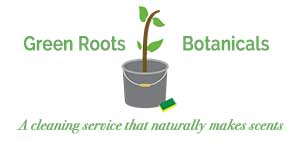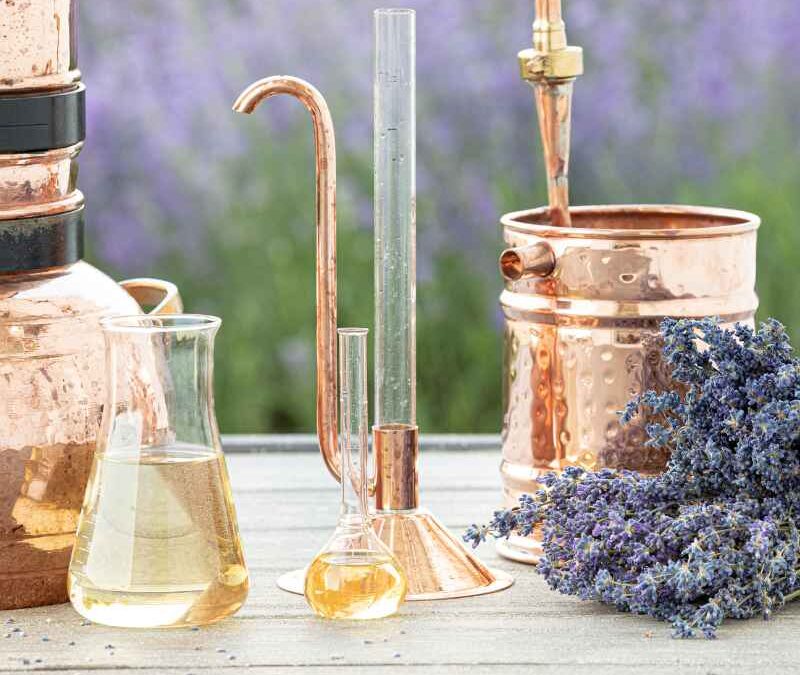Unlocking the Secrets of Nature’s Gentle Aromatic Waters
Have you ever heard of hydrosols? What is hydrosol? These gentle aromatic waters have been gaining popularity in recent years, and for good reason! In this blog post, we will delve into the fascinating world of hydrosols and explore what they are, how they are produced, their benefits, and how to use them in your daily life. So, let’s get started!
What is Hydrosol?
Hydrosols, also known as floral waters or hydrolats, are the water-based aromatic products obtained during the steam distillation process of essential oils. They are created by passing steam through plant material, such as flowers, leaves, or herbs, to extract their natural essences. Unlike essential oils, which are concentrated and can be potent, hydrosols are much gentler and can be used directly on the skin without dilution.
What Is Hydrosol Key Features
- Hydrosols are made up of water and tiny amounts of essential oil.
- They have a delicate scent, which is milder compared to essential oils.
- Hydrosols are safe for various skin types, including sensitive skin.
- They contain trace amounts of plant constituents, providing mild therapeutic benefits.
- Hydrosols are versatile and can be used in skincare, aromatherapy, and even as natural household cleaners.
How are Hydrosols Produced?
The production of hydrosols involves the process of steam distillation. Here’s a simplified breakdown of how it works:
- Plant Material Selection: High-quality plant material, such as freshly harvested flowers or herbs, is chosen for the distillation process. The quality of the starting material is crucial in obtaining a potent and fragrant hydrosol.
- Steam Distillation: The plant material is placed in a still or distillation apparatus. Steam is then passed through the plant material, gently releasing its aromatic compounds.
- Condensation: As the steam passes through the plant material, it carries the volatile aromatic compounds. The steam is then cooled and condensed, transforming it back into a liquid state.
- Separation: The condensed liquid consists of two distinct parts: the essential oil, which floats on top, and the hydrosol, which settles beneath it. The hydrosol is collected and separated from the essential oil.
Benefits of Hydrosols
Hydrosols offer a wide range of benefits, making them a valuable addition to your skincare and well-being routine. Here are some key advantages:
- Gentle Skincare: Hydrosols are mild and gentle, making them suitable for all skin types, including sensitive or irritated skin. They can be used as facial toners, refreshing sprays, or added to face masks.
- Therapeutic Properties: Each type of hydrosol carries its own unique set of therapeutic properties. For example, rose hydrosol is known for its calming and soothing effects, while lavender hydrosol can help promote relaxation and improve sleep quality.
- Natural Aromatherapy: Hydrosols can be used in aromatherapy to create a pleasant and calming atmosphere. You can spritz them in your living space, use them in a diffuser, or even incorporate them into homemade candles or bath products.
- Mild Antiseptic Properties: Some hydrosols, such as witch hazel, possess mild antiseptic properties, which can help cleanse and soothe the skin.
Popular Types of Hydrosols
Hydrosols are available in a variety of types, each with its own unique characteristics and potential uses. Here are a few popular hydrosols:
- Rose Hydrosol: Known for its delicate floral scent, rose hydrosol is prized for its calming and balancing effects on the skin. It can help hydrate, soothe inflammation, and reduce redness.
- Lavender Hydrosol: Lavender hydrosol offers a soothing and relaxing aroma. It can aid in promoting a sense of calmness and reducing stress. Additionally, it may assist in soothing minor skin irritations and blemishes.
- Chamomile Hydrosol: Chamomile hydrosol is gentle and known for its soothing properties. It can help alleviate skin irritation, redness, and inflammation. This hydrosol is often used in skincare products for sensitive or acne-prone skin.
- Witch Hazel Hydrosol: Witch hazel hydrosol has astringent properties, making it beneficial for oily or combination skin. It helps tighten pores, reduce excess oil, and can be used as a facial toner.
How to Use Hydrosols
Incorporating hydrosols into your daily routine is easy and enjoyable. Here are a few suggestions on how to use them:
- Facial Toner: After cleansing your face, apply a small amount of hydrosol to a cotton pad and gently wipe it over your face. It will help balance the skin’s pH, hydrate, and prepare it for further skincare steps.
- Refreshing Spritz: Transfer your favorite hydrosol into a spray bottle and spritz it on your face throughout the day for a quick and refreshing pick-me-up.
- Aromatherapy: Create a relaxing atmosphere by adding a few drops of your preferred hydrosol to a diffuser or humidifier. Breathe in the calming aroma to promote relaxation and well-being.
- DIY Skincare: Use hydrosols as an ingredient in DIY skincare recipes. They can be added to face masks, lotions, or creams to enhance their properties and provide a natural fragrance.
Buying and Storing Hydrosols
When purchasing hydrosols, it’s important to ensure their quality and authenticity. Here are a few tips to consider:
- Look for organic or wildcrafted certifications on the hydrosol product to ensure it has been produced from high-quality plant material.
- Check the ingredients: Ensure that the hydrosol contains only pure hydrosol and doesn’t contain any synthetic fragrances or additives.
- Store hydrosols in dark-colored glass bottles away from direct sunlight and excessive heat. This will help preserve their freshness and extend their shelf life.
Hydrosols and essential oils are both products of the steam distillation process, but they have distinct characteristics and uses. Here are the key differences between hydrosols and essential oils:
1. What Is Hydrosol Composition:
- Hydrosols: Hydrosols are primarily composed of water. During the distillation process, when steam passes through the plant material, it carries both the water-soluble compounds and a small amount of essential oil. As a result, hydrosols contain a diluted concentration of essential oil, typically less than 1%.
- Essential Oils: Essential oils are highly concentrated extracts obtained from plants. They are composed of volatile aromatic compounds that are hydrophobic (repel water). Essential oils are usually 100% pure and require dilution before topical application.
2. Scent:
- Hydrosols: Hydrosols have a subtle, delicate scent. Compared to essential oils, their aroma is milder and less concentrated. The scent of hydrosols is often reminiscent of the plant material from which they are derived.
- Essential Oils: Essential oils are highly aromatic and possess strong scents. They are highly concentrated and known for their potent fragrances, which can vary depending on the plant source.
3. Use and Application:
- Hydrosols: Hydrosols are gentle and safe for direct use on the skin without further dilution. They are commonly used in skincare as facial toners, refreshing sprays, or as a base for homemade products. Hydrosols can also be used in aromatherapy and as natural room sprays.
- Essential Oils: Essential oils are highly concentrated and potent. They should always be diluted before topical application, typically with a carrier oil. Essential oils are versatile and can be used in aromatherapy, massage oils, bath products, candles, and more. They are known for their therapeutic properties.
4. What Is Hydrosol Shelf Life:
- Hydrosols: Hydrosols have a shorter shelf life compared to essential oils. Their water content makes them susceptible to bacterial growth and degradation over time. It’s important to store hydrosols properly and use them within their recommended shelf life, typically within 6-12 months.
- Essential Oils: Essential oils have a longer shelf life compared to hydrosols. When stored in a cool, dark place, away from sunlight and heat, essential oils can last for several years. However, their quality may deteriorate over time.
5. What Is Hydrosol Therapeutic Properties:
- Hydrosols: Hydrosols contain trace amounts of plant constituents and can provide mild therapeutic benefits. However, their properties are generally milder compared to essential oils. Hydrosols can offer hydration, soothing effects, and gentle skin benefits.
- Essential Oils: Essential oils are concentrated sources of the plant’s active constituents, giving them potent therapeutic properties. They can be used for various purposes such as relaxation, mood enhancement, skincare, respiratory support, and more. Each essential oil has unique properties.
Remember, while hydrosols and essential oils are derived from the same plant material, they serve different purposes and have distinct characteristics. Both have their own benefits and can complement each other in different applications.
Conclusion
Hydrosols are nature’s gentle aromatic waters, offering a myriad of benefits for your skin and well-being. Whether you’re looking for a natural skincare solution, a calming aromatherapy experience, or a refreshing spritz, hydrosols have got you covered. Embrace the power of these delicate botanical essences and unlock their secrets to enhance your daily routine. Get ready to enjoy the gentle touch of nature’s finest creations!
Remember, this blog post only scratches the surface of what hydrosols have to offer. So go ahead, explore, and let the magic of hydrosols transform your self-care rituals!
Have fun creating a life that naturally makes scents!
Read Next:



